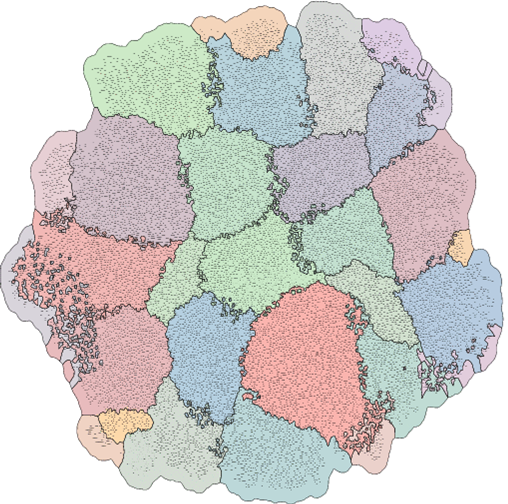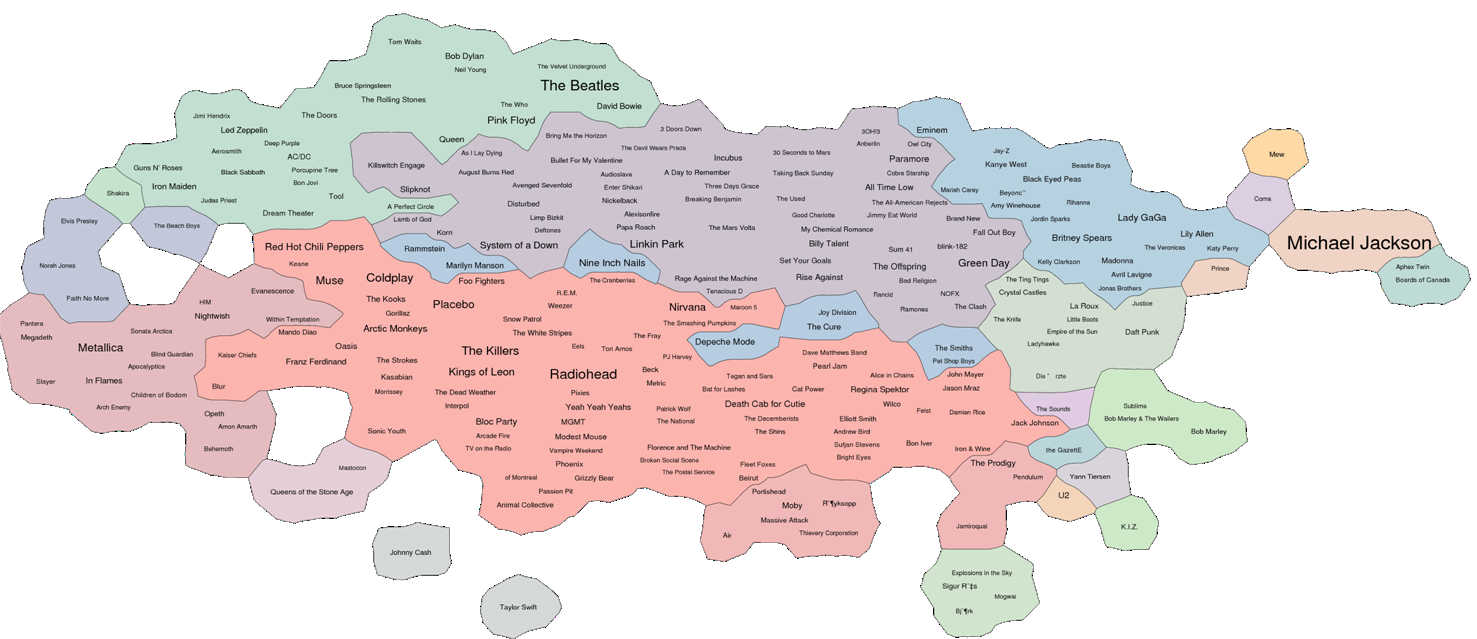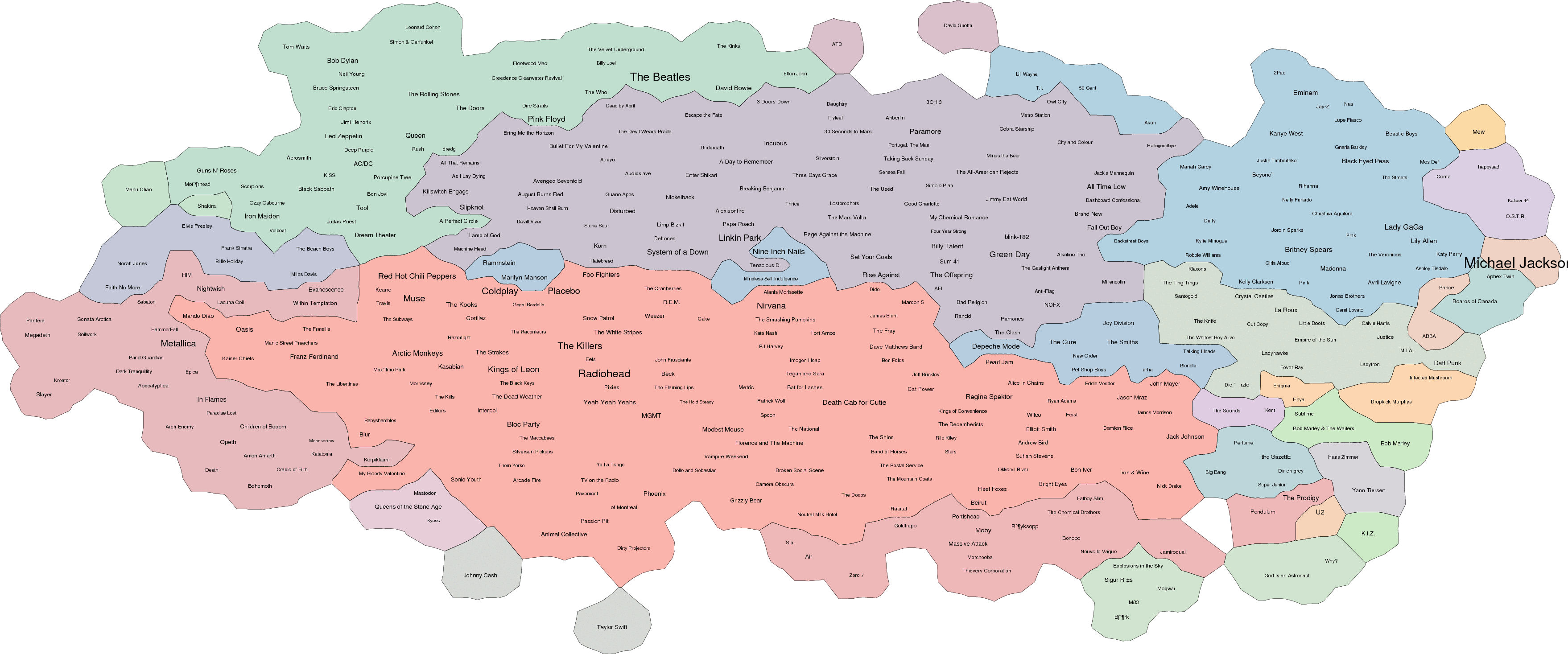


|

|
| (a) A map of 18,000 artists created with no modification, which suffers from significant fragmentation | (b) A map of 18,000 artists created with modified edge weights |

|
| The top 250 artists: showing artist popularity through font sizes, while also displaying similarity using the geographic map metaphor. |

|
| An animated map that shows popularity changes only by means of font sizes. It is not easy to identify what changes are happening on the map even though it well follows geographic map metaphor. |